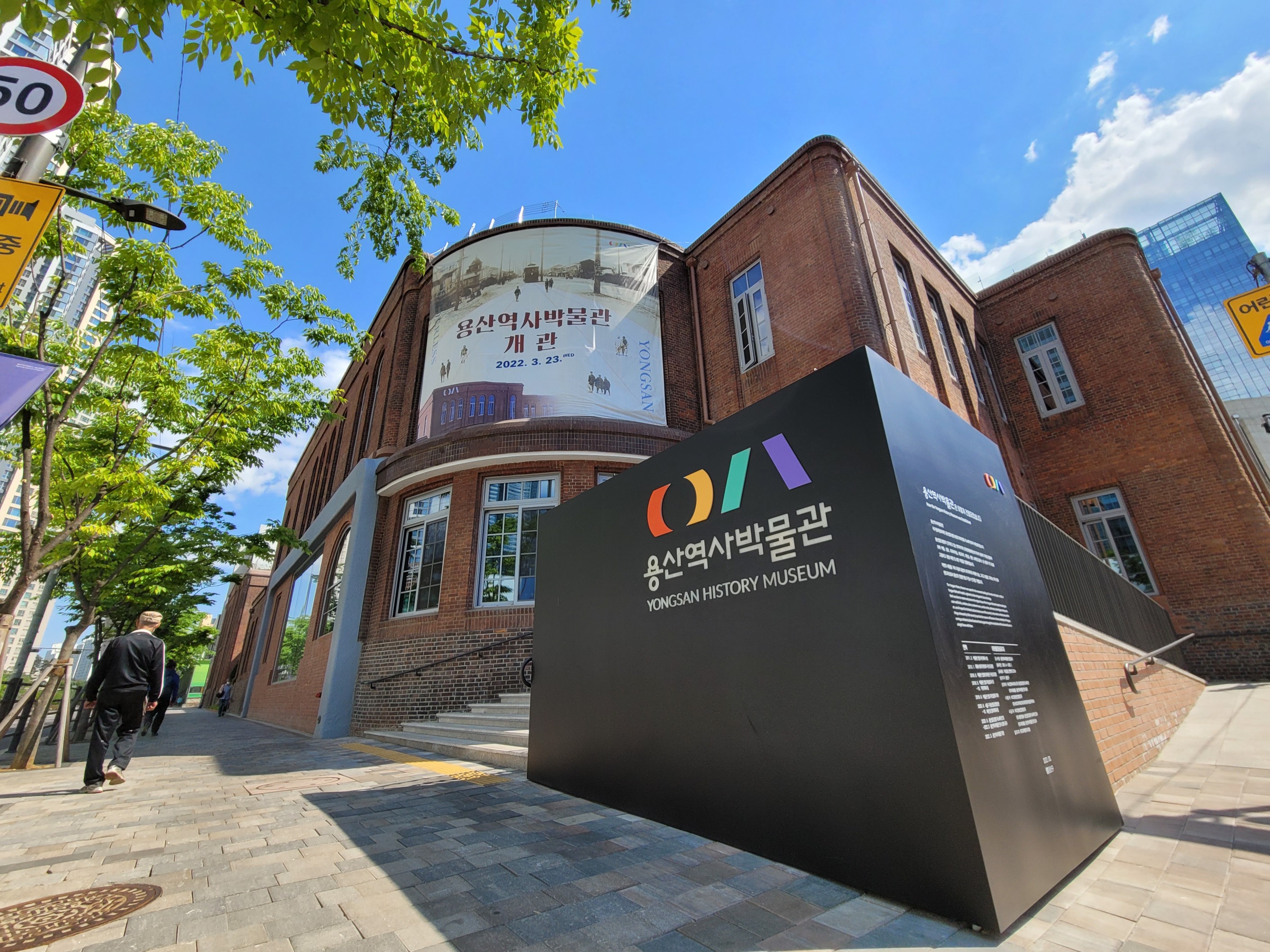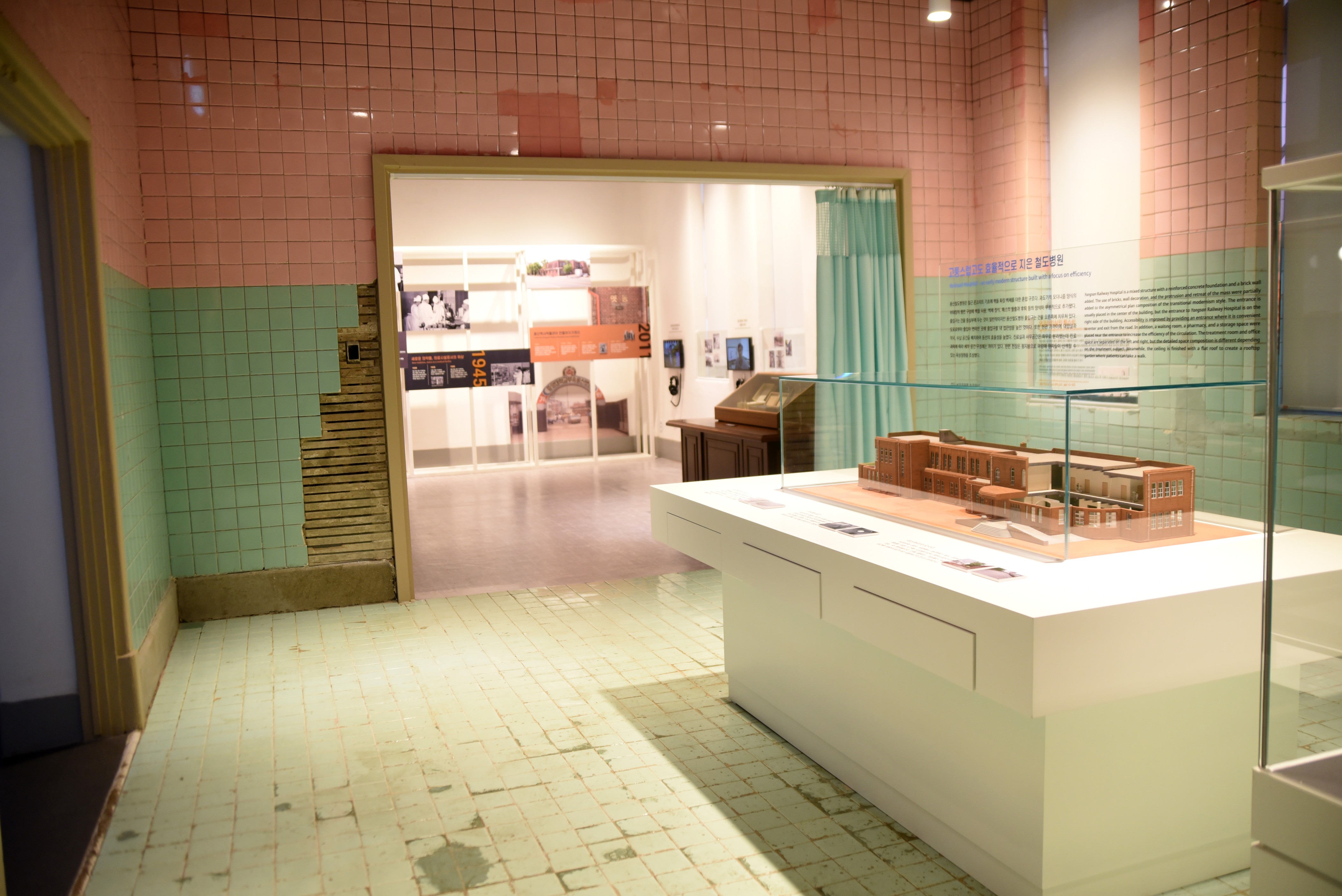[May] New museum tells Yongsan’s complicated but rich history
Date May 20, 2022
 Main entrance to the Yongsan History Museum just off Hangang-daero, south of Yongsan Station. Its rooftop terrace also displays stunning views of the surrounding high-rises.
Main entrance to the Yongsan History Museum just off Hangang-daero, south of Yongsan Station. Its rooftop terrace also displays stunning views of the surrounding high-rises.
●The Yongsan History Museum introduces hidden, overlooked stories from central Seoul’s most multicultural district.
●Koreans rediscover local history as the U.S. military returns its former base.
Not far from Seoul’s Yongsan Station, between Line 4’s Sinyongsan and Ichon stations, stands a curious, two-story red-brick building with a distinctive, gracefully curved facade that reveals a fascinating history.
It was established in 1907 as Yongsan Railroad Hospital, and later became part of Chung-Ang University Yongsan Hospital. In 2008, it was designated as National Registered Cultural Heritage No. 428 in recognition of its architectural value. After sitting empty for years, it underwent renovation before reopening this March 23, no longer a hospital but a museum – Yongsan History Museum.
How much history could possibly be gleaned from an old hospital building, built outside the city walls, near a transportation hub and a massive foreign military garrison?
Actually, quite a lot.
The renovations are extensive, but one ground-floor operating room has been allowed to retain some of the hospital’s original appearance, with walls covered in green and pink tiles. There is plenty of information about the hospital in its early years and during the 1910-45 Japanese colonial period.
“The building represents an era that is not well discussed in Korea, which is the modernization of Seoul by the Japanese. Train tracks and train networks in Korea were put in during the Japanese colonial period. And the hospital was set up to treat injuries related to the construction of railroad tracks,” said Daniel Oh, co-founder of the Yongsan Legacy digital archiving project and member of the committee organized to develop the museum.
But the museum also looks more deeply into the history of the district. There is plenty of information on Korea’s early rail development, as the hospital grew in tandem with it, handling not only construction-related injuries but also more general medical care for the growing number of railroad employees and their families.
The museum also takes a deeper look at life in Yongsan, going back as far as the final years of the Joseon Dynasty and providing a bit of information on what the area is like today, as well as its fading military past. It shows how Yongsan’s Itaewon district – whose restaurants, shops and clubs are enjoyed today by Koreans and foreigners alike – came into existence alongside a military camp formed after the 1950-53 Korean War. The museum also looks at some of the industries that sprang up around the base, which had been a garrison for imperial Chinese troops during Joseon, for imperial Japanese soldiers during the colonial period and U.S. Forces Korea personnel after the Korean War. Business-minded Koreans found the area highly lucrative, and products sold on the U.S. military base often showed up in black market shops a little further north in Namdaemun Market.
 An operating room in the former Yongsan Railway Hospital still bears traces of its past after being renovated as part of the Yongsan History Museum.
An operating room in the former Yongsan Railway Hospital still bears traces of its past after being renovated as part of the Yongsan History Museum.
One room at the museum provides information on Haebangchon (Liberation Village), a neighborhood perched on a slope of Namsan Mountain that overlooks Yongsan Garrison. Today, Haebangchon, or HBC, houses a fairly large foreign population, but it used to be a village of refugees. After Korea’s liberation from Japanese colonial occupation in 1945, it was settled by Koreans returning from abroad or moving south to escape the communist north.
“Given that there are so few early modern railroad hospitals left worldwide, the Main Hall of Yongsan Railroad Hospital is truly an important historical heritage,” reads a sign in the museum.
The opening of the museum heralds a new era for the district, as nearby Yongsan Garrison is closing down with most of its military functions and personnel having been transferred south to Humphreys Garrison in Pyeongtaek, Gyeonggi-do Province. As the land is set to be returned to the Korean people, there are high expectations for the future of the neighborhood, and Koreans are eager to take a peek inside.
A couple kilometers down the same street is the former site of Black Hawk Village, which until recently had provided family housing for U.S. military officers and their families. Now called Yongsan Park, the site houses 18 condo-style buildings, two playgrounds and a barbecue pit. It opened to the public in the summer of 2020, and some of the buildings were renovated into exhibition spaces, cafes and other multiuse facilities. It has become a popular place for Koreans to take a stroll and view a truly foreign environment, right in the middle of the Peninsula’s biggest city.
“I think the most critical problem with the Yongsan area is that there is not much known about it,” Oh said. “If you talk to Koreans, most of them don’t even know where Yongsan Garrison is located. The area has been removed from their daily lives.”
Places like Yongsan History Museum and Yongsan Park symbolize the major changes happening and help expand awareness of the area, which is becoming one of Seoul’s most important districts. For more information, visit the Yongsan History Museum website (Korean).
**If you have any questions about this article, feel free to contact us at kocis@korea.kr.**

The Ministry of Culture, Sports and Tourism's "Korea Here & Now" work can be used under the condition of "Public Nuri Type 1 (Source Indication)."




